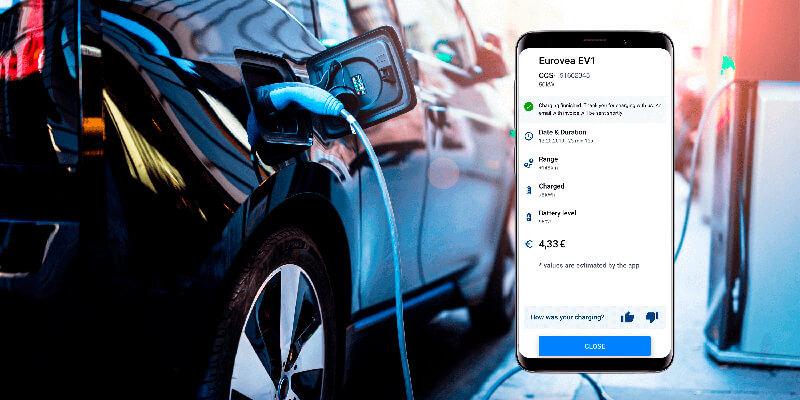Electric vehicles can mitigate the impact of industrialisation and air pollution. But ‘range anxiety’ and a comparatively limited refuelling infrastructure is restricting sales growth. Magdaléna Mihálová suggests the answer is navigation designed specifically for electric cars

Despite the attractiveness of electric cars, sale of cars with combustion engines are still higher than those of electric vehicles or any other alternative methods of transport. The most significant reason for this is ‘range anxiety’ – concerns that vehicles will run out of power too frequently or before they can reach a refuelling point. This is caused by many factors, including inadequate knowledge of how to calculate routes, how to find the right charging stations, and how weather and driving style affect battery status.
But what if there is a solution to this? Navigation tailored for electric vehicles.
Currently, most of the embedded navigation systems in electric cars, as well as those in apps and other systems, calculate routes in the same way as systems in cars that run on fossil fuels – they determine the fastest or the shortest route. But this may disregard many essential details that influence the battery condition in an electric vehicle – driving style, the driver’s behaviour, weather conditions, the traffic, road typology, elevation, and charging speed.
Moreover, there are far fewer places to charge electric cars than there are service stations for diesel and petrol cars, and charging an electric car is not as fast as refuelling a car with fossil fuel. Charging is also not so straightforward, even if the navigation system finds a charging station compatible with your plug or flow rate – the station may be occupied.
The solution is a navigation system with predictive planning.
Some big differences
The most consequential ‘energy eater’ is driving style. Internal combustion engines are most fuel-efficient at higher speeds – up to 90km/h. Meanwhile, electric motors achieve their best results at speeds less than 70km/h.
From the routing perspective, this means that if a driver navigates from point A to point B with a higher average speed, they might need to make a one-hour stop to recharge fully. But by avoiding highways and going a slightly longer route at an average speed of 70km/h, it might be possible to skip the charging stop and arrive directly at the destination.
One of the reasons electric vehicles are handy for cities is that thanks to recuperation, braking and acceleration do not result in higher fuel consumption as they do in conventional cars. However, heating and air conditioning discharge the battery fairly fast.
The role of e-routing navigation is to predict the estimated time spent in traffic and how this will influence the range. Traffic jams are a big problem here, so an e-navigation system should determine a better route before the car arrives at the jam.
Going uphill requires more fuel, no matter what car you’re driving. However, descending and using regenerative braking recharges power cells, increasing the driving range. If the navigation system considers the routing topology, it can increase the car’s range.
Weather is a big issue for electric vehicles, as windscreen wipers, air conditioning and heating all drain the battery. E-routing therefore needs to be ready to find an emergency stop for charging the battery, if the charge gets too low.
Smart algorithm
So how can this be done in practice? We recently added an electric vehicle navigation mode to our flagship Sygic GPS Navigation that includes smart routing. Our smart algorithm schedules vehicle compatible charging points en route to secure safe and comfortable travel. It selects charging points taking into account the cost of travel and travel time, including the time spent charging. The algorithm also respects the user’s charging preferences, and can make last-minute recalculations based on changes in battery conditions, as well as the real-time availability of charging stations.
The most critical part of this is sourcing the necessary data from the providers of charging stations and vehicles. Dynamic and static data have to be provided in quality and online, including the availability of charging stations, connector types, charging speed and price. Another necessary aspect is information from the vehicle – battery level and the range of the vehicle. Lastly, it incorporates traffic levels, elevation and other factors that can influence the car’s range.
The release of this EV Mode is part of our long-term strategy to become the leader in electric mobility, with an open platform integrating leading charging service providers around the world and with dedicated features for tackling range and charging anxiety.
Magdaléna Mihálová is responsible for global PR and brand communication for automotive at Sygic (www.sygic.com/business)


